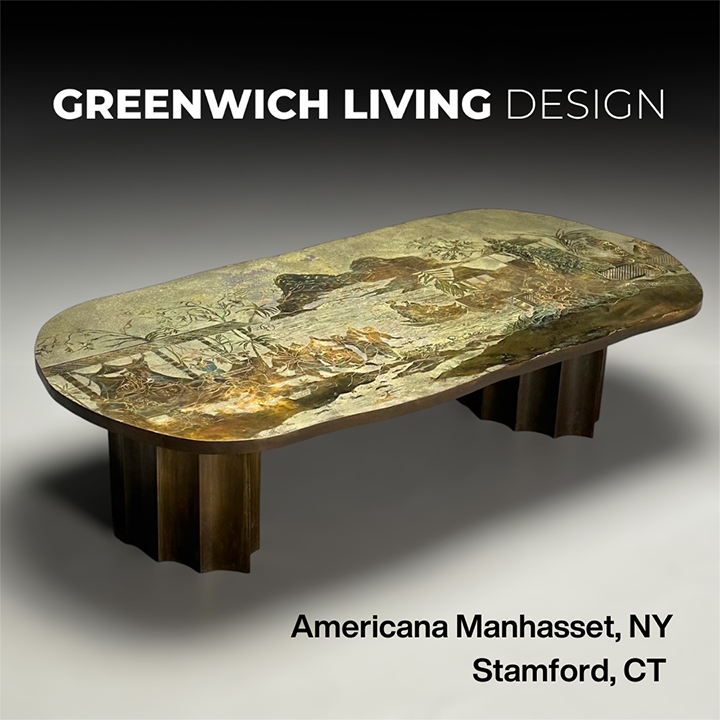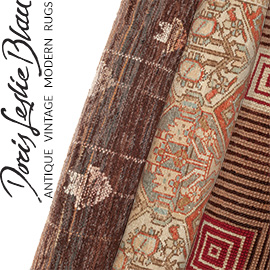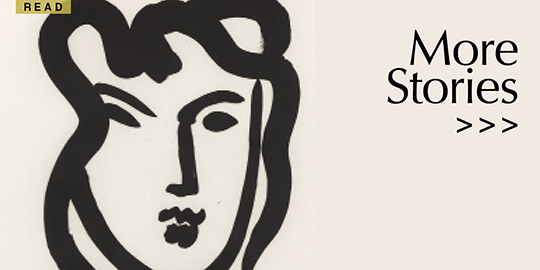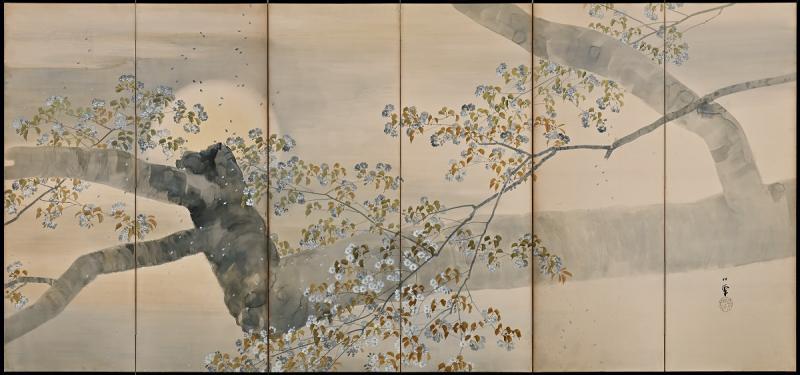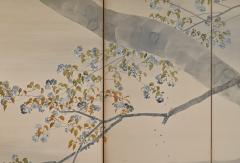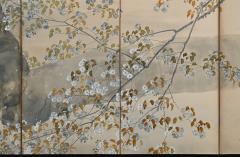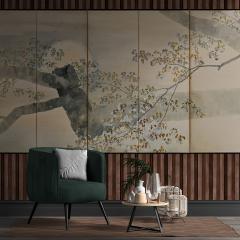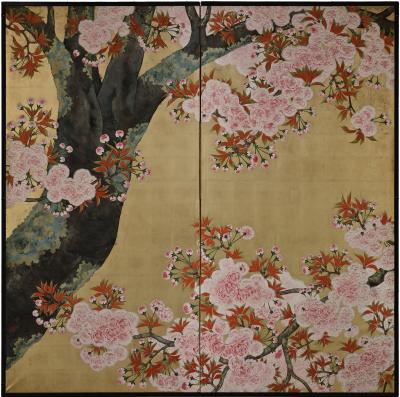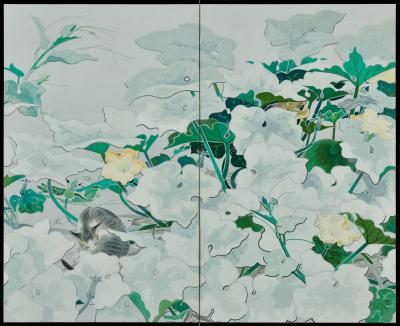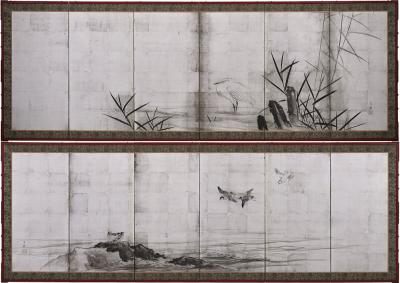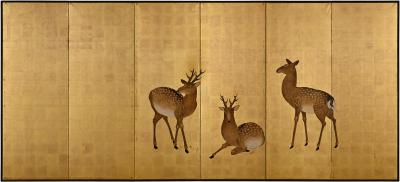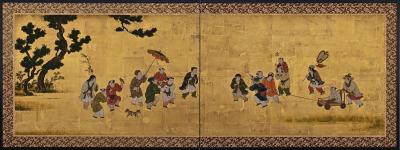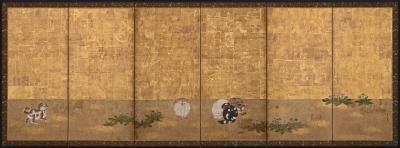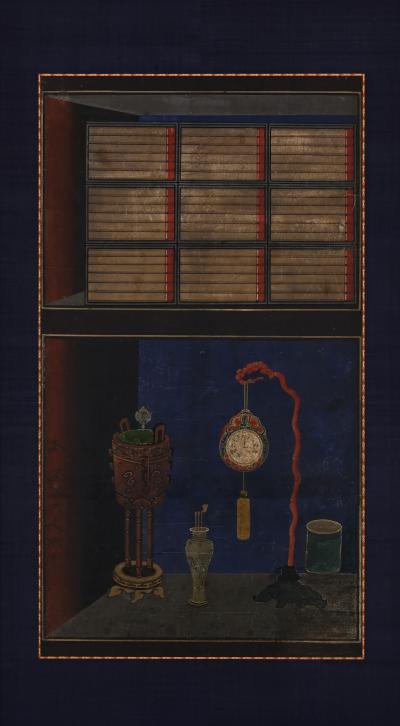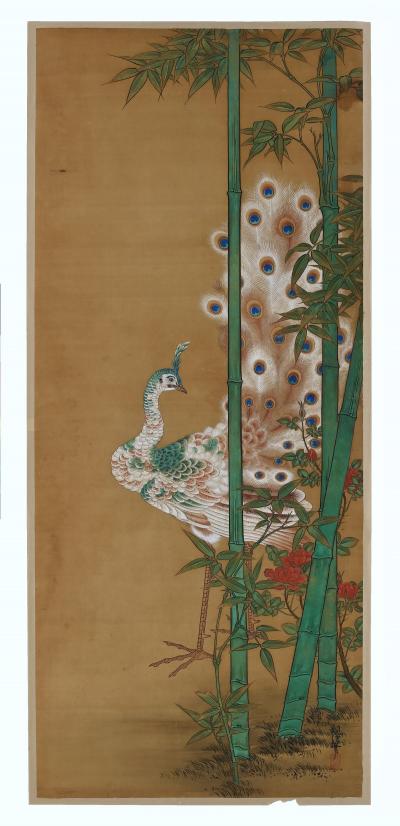Kobayashi Shosen (1877-1946)
Cherry Blossoms in Moonlight
Six-panel Japanese Screen. Ink, color and gofun on paper.
Dimensions: H. 174 cm x W. 368 cm
Price: USD 29,500
The image depicts a stunning scene captured on a six-panel Japanese folding screen from the Meiji period. Commanding the center is a massive tree trunk belonging to a blooming cherry blossom tree, its horizontal span emphasizing its grandeur. The tree’s delicate blossoms are illuminated by the soft light of a rising full moon peeking from behind the trunk. The entire scene is bathed in the ethereal glow of the moonlight, casting a serene atmosphere. Blustery winds swirl through the air, causing cherry blossom petals to dance and drift gently across the scene. The artwork, rendered in the Japanese nihon-ga style of the turn of the century, features soft colors and subtle ink wash techniques, with light hues accentuating the delicate beauty of the flower petals. The trunk serves as a natural divider between the foreground and background, creating a sense of depth and perspective within the painting. The image captures the tranquility and ephemeral beauty of a moonlit cherry blossom night in Japan.
Cherry blossoms or sakura hold profound significance in Japanese culture, weaving intricate layers of meaning in literature, poetry, and art. Their brief blossoming period often parallels the transient beauty of existence. ‘Mono no aware’ is a Japanese phrase that encapsulates the delicate emotions evoked by the subtle nuances of life and the changing seasons. In this scene the moon’s luminous presence and the gentle fall of cherry blossoms evoke a profound sense of mono no aware, inviting contemplation of life’s fleeting moments.
Kobayashi Shosen, born in Atsuta, Aichi Prefecture in 1877, embarked on his artistic journey under the tutelage of Hattori Sekisen from the Shijo school. Upon relocating to Tokyo, he honed his craft under the guidance of Kawai Gyokudo. Seeking to further refine his skills, he pursued studies with Takeuchi Seiho in Kyoto. Throughout his career, Shosen showcased his talent through depictions of shrines, temples, flowers, and birds. Renowned for his mastery in painting sparrows, he earned a reputation as a foremost artist in this genre. In his later years, he transitioned to a lighter and more stylish painting style characterized by reduced brushstrokes, earning widespread acclaim for his skillful use of negative spaces. Amidst the turmoil of war, he found refuge in Gifu prefecture and passed away in Nakatsugawa city in 1946.




